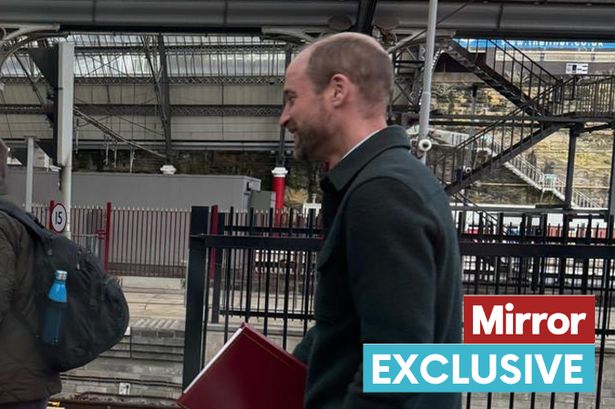Prince William’s recent visit to Liverpool, punctuated by a surprisingly ordinary train journey, generated a buzz of excitement among fellow passengers and railway staff. Choosing to travel on a standard Avanti West Coast service rather than opting for a more private mode of transport, the Prince of Wales demonstrated a refreshing down-to-earth approach, instantly making him relatable to everyday commuters. His willingness to engage in casual conversation with those around him further solidified this image, transforming a mundane train ride into a memorable encounter for many. This seemingly spontaneous act of normalcy resonates deeply with the public, fostering a sense of connection between the Royal Family and the people they represent.
The Prince’s decision to travel by train aligns with a growing trend among public figures to embrace more sustainable and accessible forms of transportation. While security concerns often dictate travel arrangements for high-profile individuals, Prince William’s choice reflects a conscious effort to minimize environmental impact and connect with the public on a more personal level. This echoes a broader societal shift towards eco-conscious choices and a desire for authenticity from public figures. By choosing a mode of transport accessible to all, Prince William underscored a commitment to both environmental responsibility and public engagement, setting an example that resonates with a society increasingly attuned to these values.
The surprise encounter on the train provided a unique opportunity for passengers and staff to interact with the Prince in an informal setting. Unburdened by the formality of official engagements, the conversations were likely more relaxed and spontaneous, allowing for genuine connections to form. The informality of the setting stripped away the usual barriers associated with royalty, creating a space for authentic human interaction. This approachable demeanor further enhances the Prince’s public image, fostering a sense of familiarity and reinforcing the perception of him as a relatable and approachable figure. The shared experience of a simple train journey created a shared narrative, bridging the gap between royalty and the public.
The ripple effect of this seemingly simple train journey extends beyond the immediate delight of those present. The widespread media coverage of the event amplifies the positive impact, further solidifying Prince William’s image as a modern, accessible royal. The story resonates with a broad audience, reinforcing the narrative of a Prince who is comfortable interacting with the public in everyday situations. This approachable demeanor is crucial in maintaining public support and relevance for the monarchy in the 21st century. The positive publicity generated by the train journey contributes to a broader narrative of modernization and accessibility within the Royal Family.
The seemingly spontaneous nature of the train journey adds another layer of intrigue to the story. While undoubtedly planned for security and logistical reasons, the element of surprise enhanced the experience for those involved. The unexpected encounter created a sense of excitement and a shared moment of unique connection. This spontaneity reinforces the perception of Prince William as a down-to-earth and approachable individual, comfortable moving outside the rigid confines of royal protocol. The ability to connect with the public in unscripted moments is a valuable asset in building rapport and maintaining a positive public image.
Ultimately, Prince William’s train journey to Liverpool transcended a simple mode of transport. It became a symbol of accessibility, environmental consciousness, and a modern approach to royal engagement. The seemingly ordinary act of taking a train resonated deeply with the public, creating a shared experience that humanized the Prince and reinforced his connection with the people he represents. This approach to public engagement is crucial for the ongoing relevance and support of the monarchy in a rapidly changing world. By embracing everyday experiences and interacting with the public in informal settings, Prince William strengthens the bond between the Royal Family and the people, ensuring the monarchy’s continued place in modern society. The train journey, while seemingly insignificant in the grand scheme of royal duties, holds a deeper symbolic meaning, representing a shift towards a more accessible and relatable monarchy.














